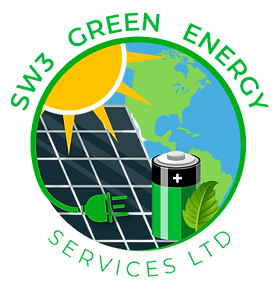Introdouctin: As solar energy systems become increasingly prevalent, many homeowners are choosing to incorporate solar batteries into their setups to store excess energy for later use. However, a common question that arises is what happens to solar power when batteries are full? In this blog, we’ll explore the dynamics of solar power overflow and how it’s managed within a solar energy system.
The Role of Solar Batteries: Solar batteries play a crucial role in maximizing the efficiency and reliability of solar energy systems. They store surplus energy generated by solar panels during periods of peak sunlight and release it when solar production is low or during times of high energy demand. This allows homeowners to increase self-consumption of solar power, reduce reliance on the grid, and enhance energy resilience.
Understanding Solar Power Overflow:
- Battery Charging: When solar panels produce more energy than is currently being consumed by the home or stored in the batteries, the excess energy is directed towards charging the batteries. This process continues until the batteries reach their full capacity.
- Battery Management: Once the batteries are fully charged, the solar energy system’s battery management system (BMS) regulates the flow of electricity to prevent overcharging. This ensures the longevity and performance of the batteries by maintaining them within their optimal operating parameters.
- Grid Export: If the batteries are full and there is still excess solar energy being generated, the surplus electricity is typically exported to the grid. In many regions, homeowners receive credits or compensation for the excess energy they export, further incentivizing the adoption of solar energy.
- Net Metering: In systems with net metering arrangements, excess solar energy exported to the grid is recorded by a bi-directional electricity meter. Homeowners receive credits for the exported energy, which can offset electricity bills during periods of low solar production or high energy consumption.
Optimizing Solar Power Overflow: While exporting excess solar energy to the grid is a common practice, homeowners can explore additional strategies to optimize solar power overflow:
- Energy Management Systems
- Smart energy management systems can prioritize energy usage based on real-time demand and solar production, ensuring efficient utilization of solar power and minimizing grid reliance.
- Load Shifting: By scheduling high-energy consumption tasks, such as laundry or dishwashing, to coincide with peak solar production periods, homeowners can maximize self-consumption and reduce grid dependency.
- Battery Sizing: Properly sizing the solar battery system to match energy consumption patterns can help minimize overflow and maximize self-consumption, ensuring that surplus energy is stored for later use rather than being exported to the grid.
Conclusion: In a solar energy system, surplus solar power generated when batteries are full is managed through a combination of battery storage, grid export, and net metering arrangements. By understanding the dynamics of solar power overflow and implementing strategies to optimize energy utilization, homeowners can maximize the benefits of their solar panels and enhance their energy resilience.
At SW3 Green Energy, we specialize in designing and installing customized solar energy systems tailored to your specific needs and preferences. Contact us today to learn more about how solar power can transform your home and reduce your carbon footprint.
Keywords: Solar power, solar batteries, energy management, grid export, net metering, renewable energy, SW3 Green Energy.
